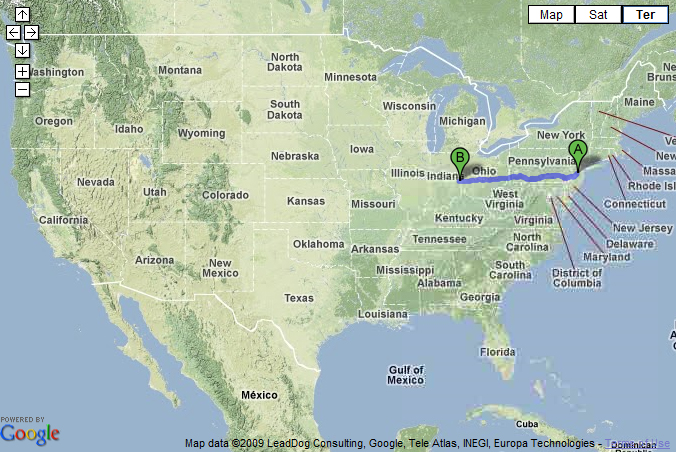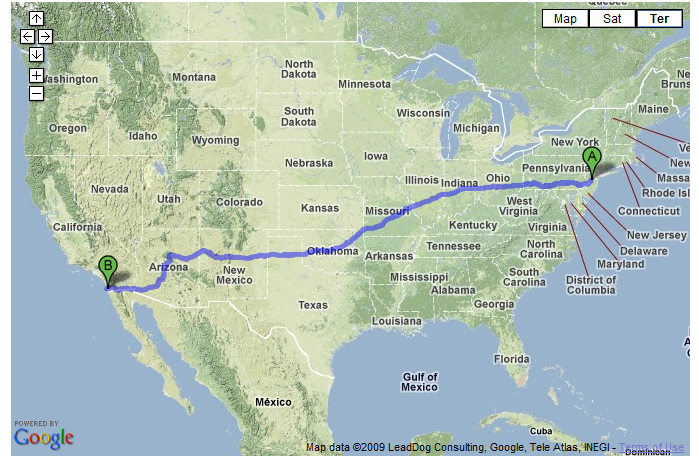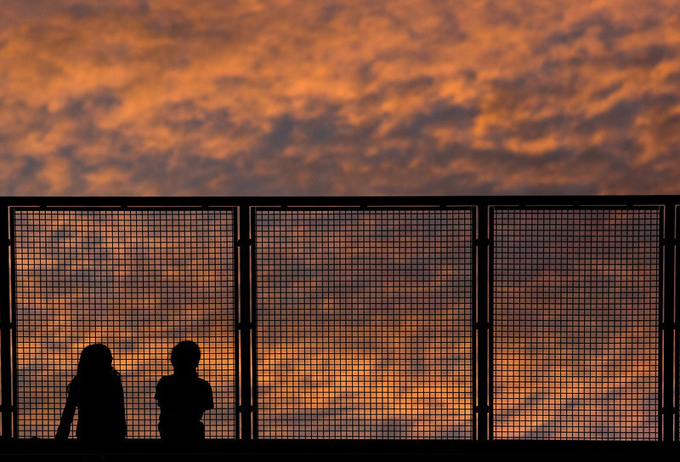Steffi got interviewed about her photography. You can find it on Slashmaraud.
Cross Country - Day 1

So far so good. I made it to Indiana, which means I reached the goal of the day and made it out of my familiar area. At the very beginning of the drive I was a little annoyed about the whole trip. Simply because of all that driving. But after leaving New Jersey, when I got a bit further into Pennsylvania, I saw the landscape changing and the sun setting. At that point the annoyance turned very quickly into excitement. At that point I started to realize what I am doing here...that I'm not gonna turn around and go back. That I'm on my own and that everything that was before is already over.
OK, before I get more sentimental, here the plan for day 2: I'll slow down. Not use the interstate much and have a look at the Gateway Arch in St. Louis. Maybe stay in that area till sunset.
Cross Country Road Trip - Takeoff
I'll be on the road for the next two weeks. If you want to join the trip, you can always come here and see where I am. Right now I'm still in Princeton - final destination is San Diego. This is a very coarse description of the route as I haven't planned much yet. I'll try to go fast during the first one or two days until I get into more unfamiliar regions. Then leave the interstate highways and slow down. Feel free to leave comments if you know interesting places to visit that are along the route.
Cheers!
Guest Picture by Jason St. Peter
Today I want to post a picture that I found on Jason St. Peter's blog named "50% Chance of Rain". A while ago Jason asked me if I would like to make a "guest appearance" on his blog. That was very nice. Then when I saw all his neat photography I decided to turn it around and post something here.
I must say that I really liked the title of the blog along with Jason's eye for dramatic skies. That works very well for me.
So if you are in for some treats, here is a link to 50% Chance of Rain.
You can find his post about my stuff here.
10 easy steps to get the right colors when printing...
...or better be prepared to be surprised...that's a line in a song I'm listening to as I'm writing. It's from the soundtrack of "Dan in real life" - great movie.
Anyway, what I actually wanted to say is: be prepared to be surprised when you send your images to a printing service the first time. And I mean one that assumes that you are somewhat serious. One that does not use some kind of color correction, but assumes that you took care of color management yourself. I was pretty surprised when I did this for the first time and got almost completely black prints back. That was a couple of years ago. Since then I became very careful when it comes to printing.
Now behind it is a whole science which I'm not familiar with. I cannot even direct you to a good website explaining all this, because I simply didn't read into it. But I can still share with you some practical tips that I picked up. So far this has been working for me. If you have also ideas how to do this, feel free to leave a comment.
Here are some hints what you might wanna do in order to not throw your money out of the window, and instead get the same colors on paper that you see on your screen:
1. Ask your print shop for test prints of a kind of standard test image.
What you need is a test print that has been done on the same printer and paper your work is going to be printed with. A serious print shop has many different version of this one image and will recommend you to take those from them for free.
2. You also need this particular test image as a file.
3. The third thing you will need is an ICC profile for this printer. The ICC profile is a file that you can load into your image processing software. It will help to emulate the color behavior of the printer.
Now when you have all these three things, you can calibrate your screen. You have to do the following:
4. Open the test image with your image software.
5. In the color management of your software, switch to the ICC profile of the printer. The picture might now appear very different from before in terms of color, brightness, and constrast.
6. Next you hold the printed test image next to the screen.
7. You now adjust the screen settings until the print and the digital version on the screen appear equal, with matching colors, brightness, etc.
If you did this right, any pictures you load from now on into your software will look equal to how it would look when you would send it to the print shop. Most likely it won't look good anymore, so read on.
Now comes the annoying part:
8.With the altered screen settings and the profile loaded, you need now to adjust each image that you want to print until it looks the way you want.
So make a backup copy of it and start adjusting.
9. This altered image is the one you wanna send for printing. It's a terrible overhead, but definitely worth it if you are eager to get in print what you see on the screen. You can store your screen settings for the next time, so you don't need to go through everything again next time you want to print.
Why I'm writing all this right now? I just went through this as I'm preparing the Halloween exhibition. Not that I have any time for this right now, but it has to be done.
Because there are so many images that need to be printed (about 30) I don't want to risk that they are all off. So I added another step to the workflow:
10. If you have a large order of expensive prints, it might be a good idea to order only one print first and use this to double check/double calibrate the screen - see picture below. There was still a difference between the image on the screen and the printed one, so I was glad I did this extra step.

A picture of my desk while trying to match the screen with the print (step 10).
I hope this was useful for someone. Cheers!
Leica S2 - What do you think?
A new camera with a DSLR look and feel, but with a larger sensor, and thus with more pixels (37.5). It's built by Leica and has a price tag of $22,995. This is for the body only. Lenses start at $4,495.
What do you think about this? When I first heard about it I couldn't imagine anybody paying this kind of money for a photo camera.
Having not much of an idea about medium format, I later on noticed that there is quite some excitement about having medium format in such a body with such a "high" frame rate (1.5 fps).
I think it's still an unbelievable amount of money for a cam. Can someone enlighten me about medium format? How superior can it be to let's say a 5D Mark II?

